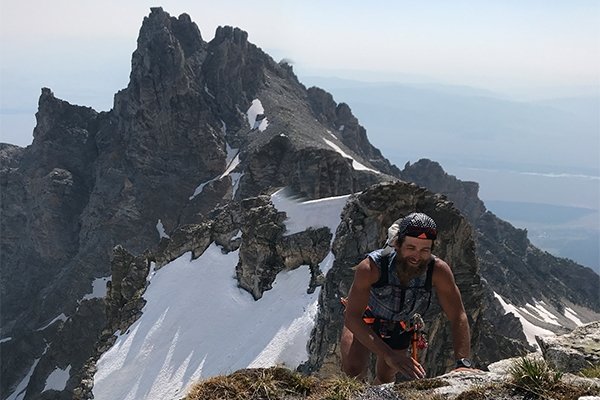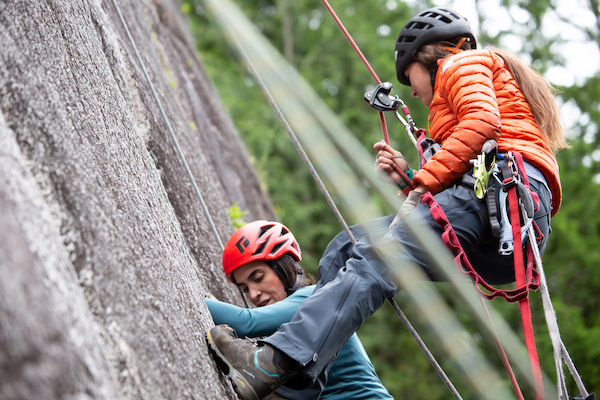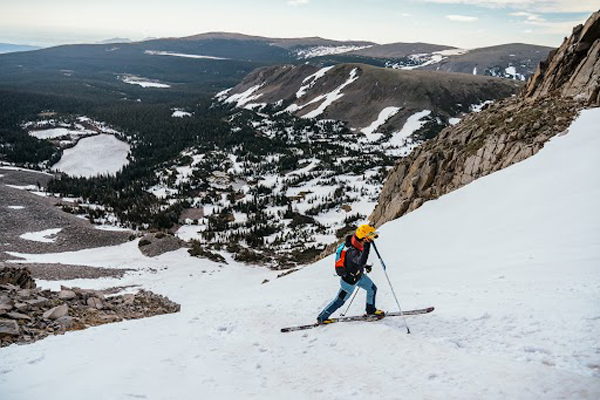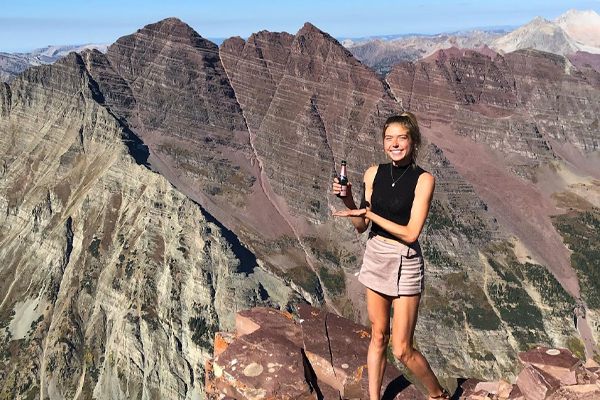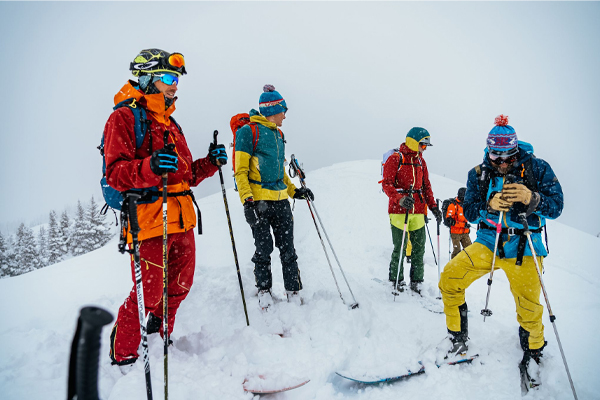Anton Krupicka - Switch to Skimo
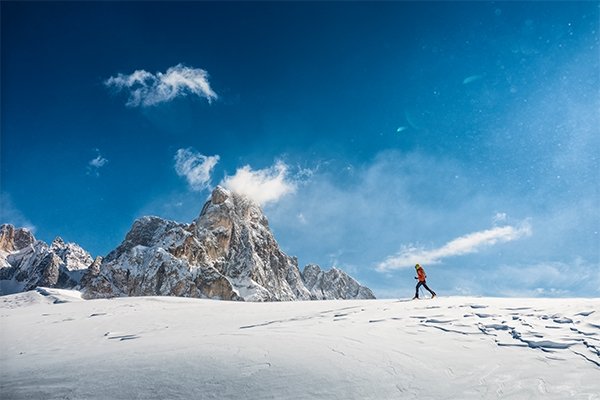
From the Dolomites to the Rockies, when snow caps the mountains Anton Krupicka takes to the planks...
- - -
It’s late October. If you like mountains, one thing is at the forefront of your mind as the last glimpse of warmer weather wanes: snow. And with snow comes skiing. While I love the mountains, and have 23 years of running behind me, I have not always been one to look for the first signs of skiing potential. Not even close. With this only being my fourth season of skiing, even writing about this is kind of new territory. Although I first moved to Colorado 16 years ago and learned how to survive a blue groomer, neither my interest or expertise ever advanced beyond a couple dozen days (on borrowed or rented gear) riding lifts.

Admittedly, I was turned off by the manicured resort scene and the high barriers to entry during my early exposure to the winter sport: the cost of a ski pass, the complexity and expense of the equipment, the minimum 2-hour drive from Colorado Springs to suitably snowy slopes. Alternately, I was also intimidated by the backcountry scene: snow science knowledge and safety; reading variable snow; being strapped down with cumbersome and heavy gear.
Eventually (of course) I saw the light, and—motivated by radical developments in lightweight alpine touring equipment technology, the general inefficiency of snowshoes for winter mountain travel and needing a cross-training activity to offset persistent injuries—a few years ago I finally committed to the only winter sport that makes sense if you like getting out in the hills.
Still very much on the steep portion of the ski mountaineering learning curve, I do think I reached a turning point last season. After 64 days on the planks over three months, I finally started to approach a semblance of what I’d envisioned of the activity when I bought my first AT set-up four years ago: skimo racing and training for fitness; climbing peaks and skiing off them; and skiing approaches to alpine climbs. Each category emphasizes a different aspect of skiing and uses slightly (but noteworthy) different gear, but they all have one thing in common—getting outside and enjoying the mountains.
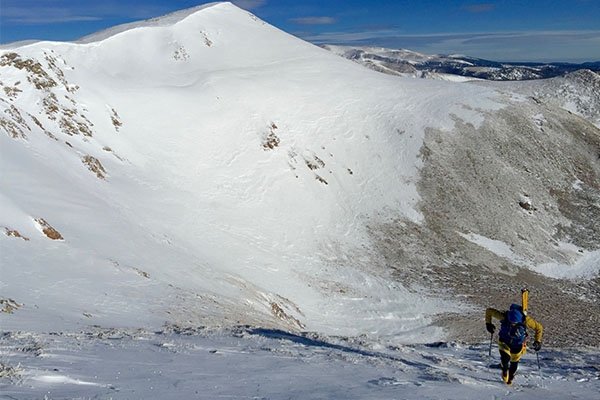
Colorado Skiing
For me, winter is the pivotal seasonal shift of the year. I quit worrying about trying to run much and instead put all of that energy into skiing, usually spending all winter focusing on amassing vertical gain to build a fitness base for mountain adventures later in the year. And, shifting to a low-impact activity that doesn’t pose much risk for overuse injury offers a welcome change.
I view skiing in Colorado, and especially on the Front Range, as being split into two separate seasons. The Front Range’s cold, dry, high altitude snowpack means that most terrain can be pretty unstable until spring skiing starts kicking in around March. Until the Front Range conditions become prime, I spend the winter logging vert on lightweight skimo gear on groomers at Eldora and skiing safe, low-angle powder stashes in the trees. Springtime starts bringing the local couloirs into play. Still an abject neophyte in this arena, I look forward to getting out with more experienced friends on the local classics in the Indian Peaks and Rocky Mountain National Park.
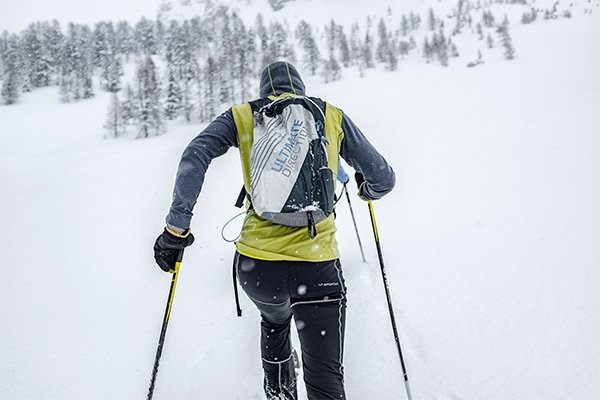
The crux of Front Range skiing is absolutely battling the raging wind once you get above treeline, but at least it’s good for character building. Despite these sometimes rugged conditions, at the same time, getting out in the mountains at higher elevations is also the most rewarding component of skimo; it allows access to the high country when it is arguably at its most beautiful. Trees and mountains always look better topped with a healthy layer of snow.
Logging more days on the planks last season than in prior years, it’s no surprise that I had my best and worst days on skis so far. My best day out was in early April when I summited and skied Kelso Mt (North Gully), Grays Peak (North Bowl), and Torreys Peak (Tuning Forks) in one big loop. I was able to ski off the summit of each peak and conditions were perfect chalky powder; I felt like I finally understood why people enjoy skiing so much! It was especially satisfying because two weeks earlier I’d had my worst day ever on skis, when I fell at the top of the Ptarmigan Headwall in RMNP. Conditions were horrible windboard after a couple weeks without fresh snow, and I ended up plummeting 700’ to the bottom of the mountain, losing both skis (snapping one in half), both poles, and my ice axe. I was extremely fortunate to come out of that with only a badly bruised heel (cracked my boot shell) and ego, but it was a valuable lesson in just how consequential ski mountaineering can be if the conditions are over your head and you make a mistake.
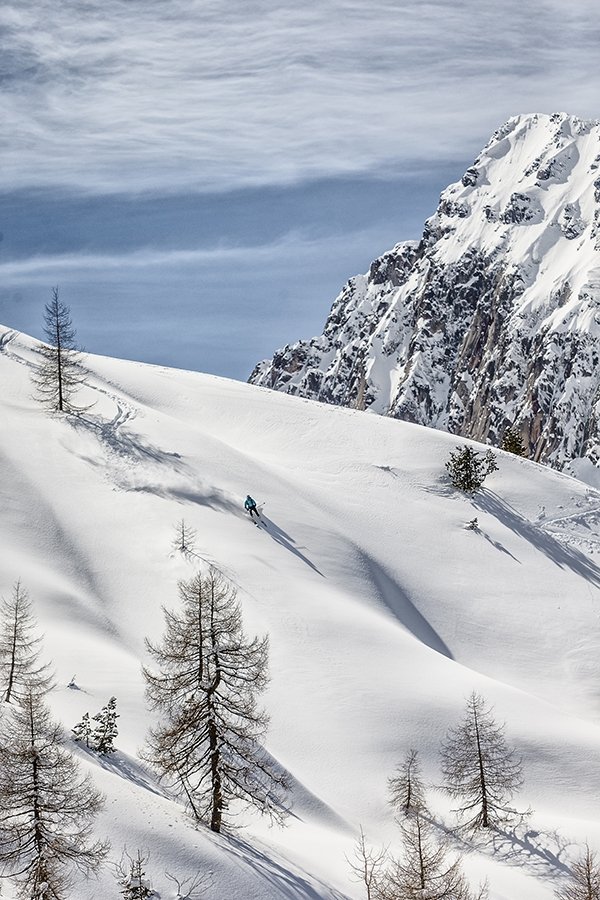
Racing + Training
Part of what makes skimo such a natural winter sport for me to adopt is its similarity to Mountain Running®. Uphill cardio fitness is a huge component of the sport, so running and uphill biking fitness carries over very well, and vice versa. I spend the winter season focusing on vertical gain, doing multiple laps every day either on groomers at Eldora, Allenspark or other local backcountry stashes. At Eldora, I can get in 1,000' in a 30-minute roundtrip lap; at Allenspark I like to try to get in a 2,000' line from ~9,200' to11,200' which clocks in around a 55 to 60-minute lap, including transitions. Number of laps vary, but I'll usually put in at least 5,000' of vertical, more typically 7,000' to 8,000', and a big day is anything over 10,000'. My single session max for vert is 16,000'. During skimo season, 40,000' gain per week is pretty typical, but I've had plenty of weeks over 50,000'. This season I plan on adding at least one day per week where I specifically skin at a higher intensity (intervals), but once the season really gets going in February and March, the Wednesday Nighthawks races are perfect for a midweek high-intensity session before racing hard on the weekends. This translates perfectly as a fitness base for my summer goals in running, which almost always include some kind of race or adventure where massive vertical gain at high altitude is a major component.
Racing the full skimo season in Colorado (COSMIC Series) is a total blast. I love competition and there are so many technical skills involved in skimo that I can always be working to improve. I’m definitely looking forward to our backyard races here at Eldora- the Indian Peaks Revenge National Cup in early December and the Nighthawks series in February- but am especially excited for Taos, Telluride, and Power of Four all in February. Those races are the heart of the skimo season here in the Rockies.
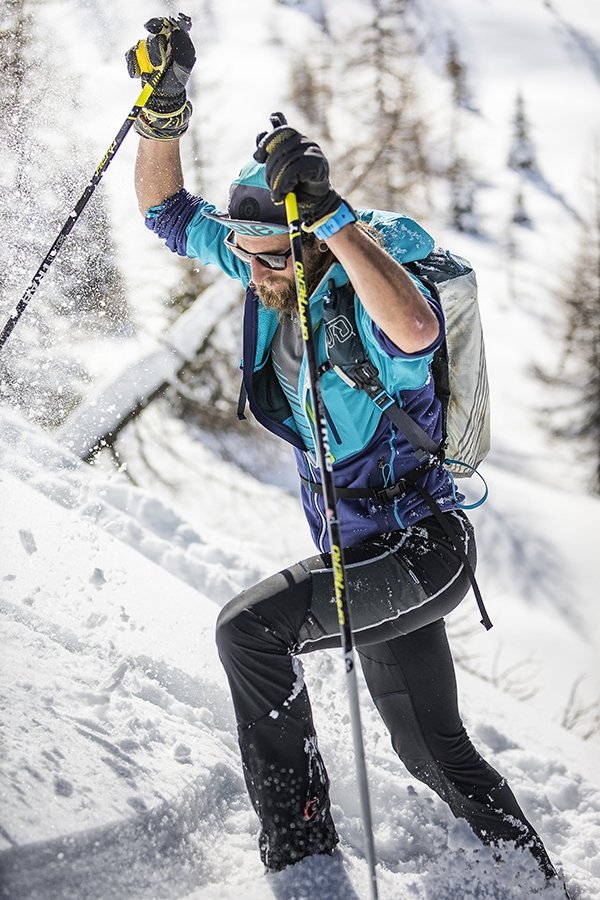
Gear
Depending on my purpose, I alternate between three different pairs of skis and two different pairs of boots. For workman-like skinning of laps and racing, I use the La Sportiva Stratos Hi-Cube paired with the Gara Aero race ski. This set-up is crazy lightweight but the Hi-Cube is noticeably stiffer than its predecessor and performs surprisingly well on the downhill.
For the backcountry this season, I’m really excited about the La Sportiva Raceborg. Any true ski mountaineering is going to involve kicking and scratching around a few rocks with crampons, so I’m looking forward to testing the durability of the Raceborg’s Grilamid shell in a sub-800g boot. For long tours, the Maestro offers some extra flotation and control over a race ski but at 900g still feels super snappy in the skintrack, allowing for big days out with a lot of vertical gain. When conditions are really soft and deep, I prefer the still crazy light (1100g) but wider Vapor Svelte plank. Finally, with my go-fast mentality, I prefer the slim and trim cut of the Vanguard Pants and find the Task Hybrid Jacket to be perfect armor for high-aerobic output while offering just enough insulation to take the edge off those fast downhills.
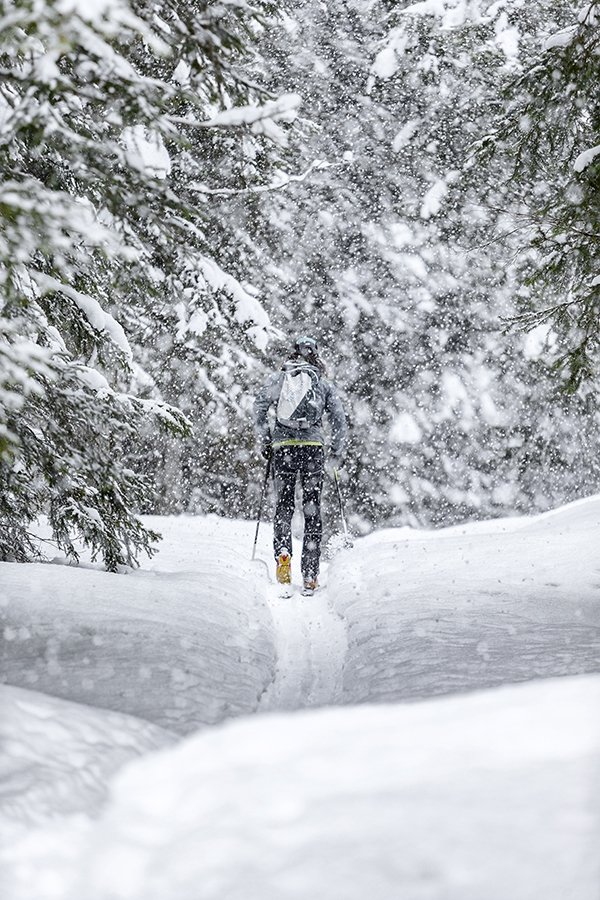
Like everything I do in the mountains, I try to minimize the extras- I don’t like carrying any extra weight up the hill- but I do always bring my iPhone. Podcasts and music are great motivators on all the uphills, and the mountains’ winter beauty makes photos mandatory.
When it comes to finding skimo beta, honestly I almost exclusively rely on friends. Backcountry snow travel virtually requires a partner for it to be safe; I’m new enough to this sport that I almost always still prefer going with someone more experienced than myself.
Preview and Photos 1, 3-6: ©Daniele Molineris/Storyteller-Labs
Photos 2: ©Joe Grant
- - -
ABOUT THE AUTHOR
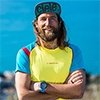 ANTON KRUPICKA is a member of the La Sportiva Mountain Running® Team.
ANTON KRUPICKA is a member of the La Sportiva Mountain Running® Team.
- - -


